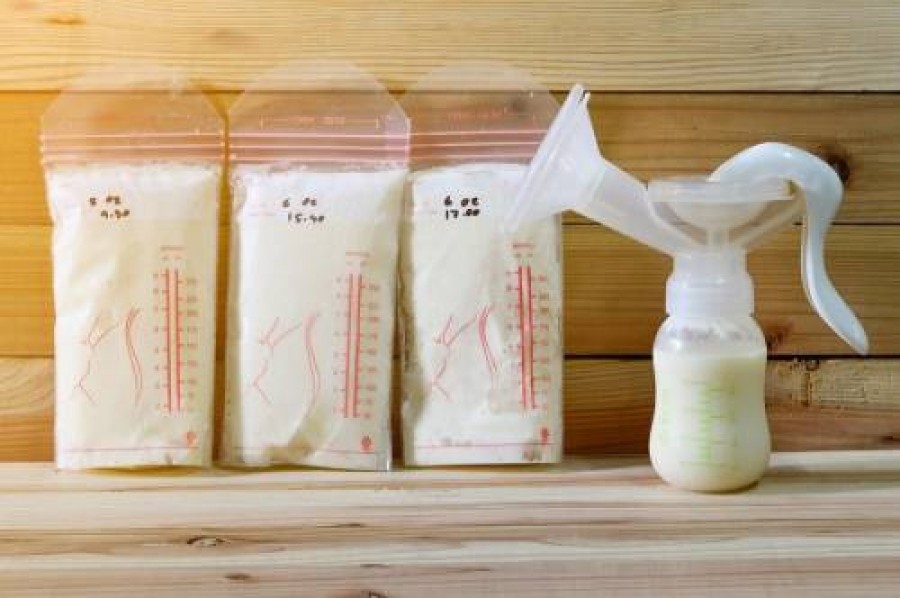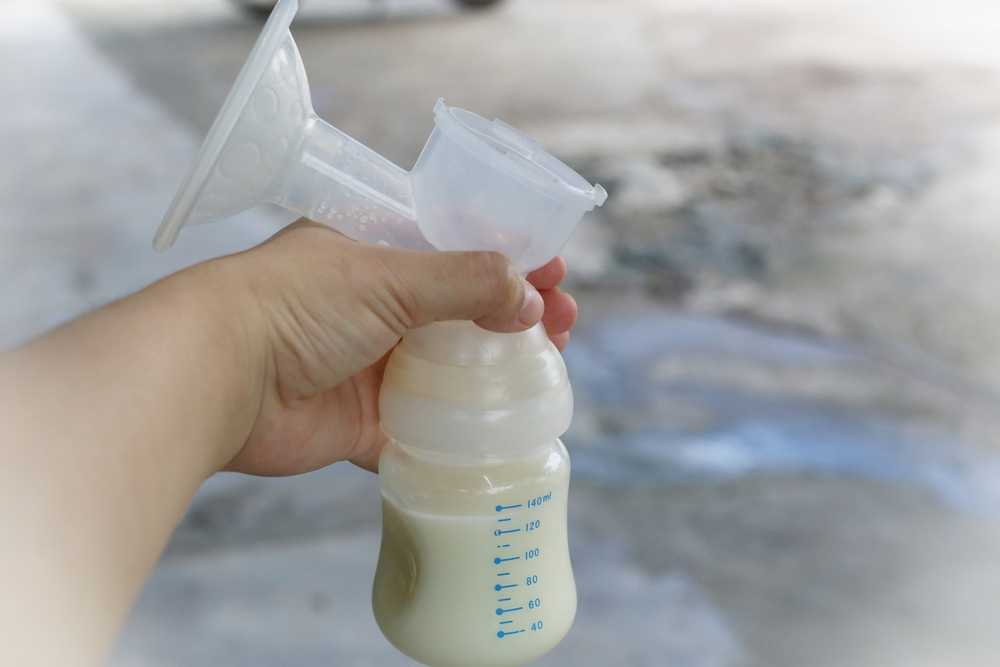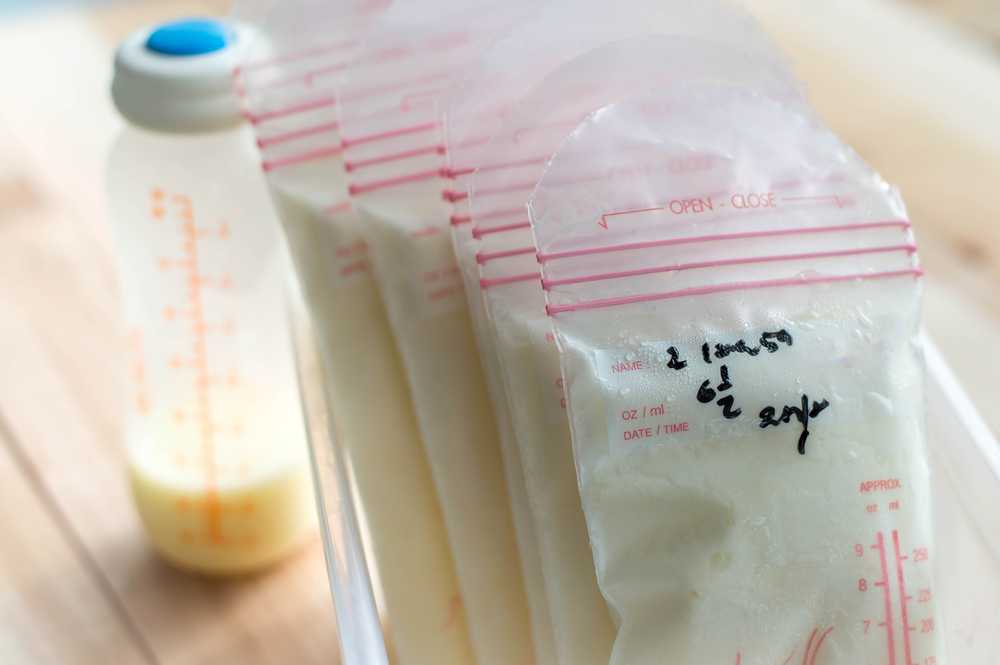How to store breastmilk the right way?

Breastmilk remains the best source of nutrition for an infant up to the age of 2-3 months. This is the period when weaning is initiated.
Breastmilk can be stored for a particular time which explains a good shelf life. Shelf life of breastmilk means the lifespan of the breastmilk during which period, the breastmilk remains in good usable condition for the baby.
However, proper steps must be taken to provide your baby with milk as fresh milk as possible.
What containers to use for breastmilk storage?
Storing breastmilk can be cheap and easy but always make sure that there are no compromises on hygiene.
You may use any of the following to store breastmilk:
- Sealable plastic bags,
- Glass bottles,
- Plastic bottles or
- Disposable bottles.
It is also safe to use any clean plastic container and cover it with plastic bag used for storing breastmilk (i.e. BPA-free plastic bags). You may also try using double plastic bags which may prevent leakage of milk.

The image above shows a baby feeder (milk container) connected to a breast pump.
The process of storage of breastmilk
Clean the container with warm soapy water (disinfectant). Rinse the container properly and dry it with a paper towel.
As you express the breastmilk, pour it in the container. Ideally, you may use a breast pump to express milk in the container. Using breast pumps to express milk from the mother’s breasts into the storage container avoids any leakages and makes the expression smoother.
Once the breastmilk is smoothly transferred in the container, let it cool down for some time since fresh breastmilk is naturally set at a mild warm temperature. When the milk cools down, you may place the container inside the fridge.
Make sure you wait for the milk to cool down every time after you express milk in the container, especially if you intend to add it to the already frozen milk. You may reuse the container after each feed. However, make sure the container is washed properly and carefully dried after every feed.

The image above shows a mother holding a plastic container with stored breast milk in it.
Adding unfrozen milk to frozen milk
It is perfectly alright if you do small frequent additions to the frozen breast milk. Let the expressed milk cool and then add it to the frozen milk .You can add up to 3-4 oz (80 to 120 ml) of milk each time.
If you don’t allow the breastmilk to cool off before adding it to the frozen milk, it may cause thawing of the milk.
Labeling the breastmilk

It is better to label each stored milk container to keep a check on its expiry and to prevent your baby from taking thawed milk.
If you keep adding to the frozen milk, make sure that you regularly update the expiry date on the label. The fresh added milk in frozen milk should not be left over a week.
The image shows properly labeled plastic container with frozen stored breast milk inside.
Optimal storage conditions for Breastmilk
Breastmilk can be kept in the refrigerator, freezer, and deep-freezer or even at room temperature. However, the storage spans of breastmilk may vary according to the temperature provided for storage.
The Chart below helps you determine estimated time period for safe storage of breastmilk according to temperature of storage. It is best to not store breastmilk at room temperature but, if available, use at least a refrigerator for storage instead.
| Breastmilk | Room temperature 26 °C | Refrigerator 4 °C | Freezer (-18 °C) |
| Fresh breastmilk | 12-24 hours | 3-5 days | 2 weeks/7-12 months |
| Frozen breastmilk | 30mins-1 hour | 24 hours | Don’t refreeze. |
| Mature milk* | 6-10 hours | – | – |
*mature milk is the milk available after colostrums and transitional phases of breastmilk.
What colour is breastmilk?
Breastmilk when frozen is set in form of layers. It is normal for breastmilk to appear in different colours except for red (which is due to the addition of blood to the milk).
Breastmilk may appear in different colours such as pink which could be because of the mother eating coloured foods such as berries or beetroot etc.
The colour of breastmilk could also be green due to eating green vegetables and so on. The colour could sometimes also be yellow or even brown. You may also see cream on top of the breastmilk as it sets down, similar to that of cow milk.
Defrost and use the stored breastmilk
Frozen breastmilk must be defrosted before it can be used. The easiest way to defrost frozen breastmilk is to place the container under cold running water from the tap. Another way would be to try and place the frozen breastmilk container inside a pot of water defrosting the breastmilk in a microwave or over above a stove.

The image above shows ready-to-use stored breastmilk.
Quick precautions before feeding the baby with stored breast milk
- Unfrozen and frozen milk in a container isn’t suitable for over 7 days.
- Refrigerate the milk at your earliest after expressing the milk
- Deep freeze the milk that you don’t intend to use in the next 72 hours.
- Label the container with date and time
- Use the oldest milk first before it thaws
Here are some great resources on how to store breastmilk the right way:
Australian Breastfeeding Association
Department of Health, WA
Most Viewed
-
5 Common Methods of Contraception
Last updated On by Percy Oad -
How to Cope with Male Infertility
Last updated On by Alina -
What is the Difference Between Primary and Secondary Infertility?
Last updated On by Madison -
How to start a child-free life after infertility
Last updated On by Jacinta








